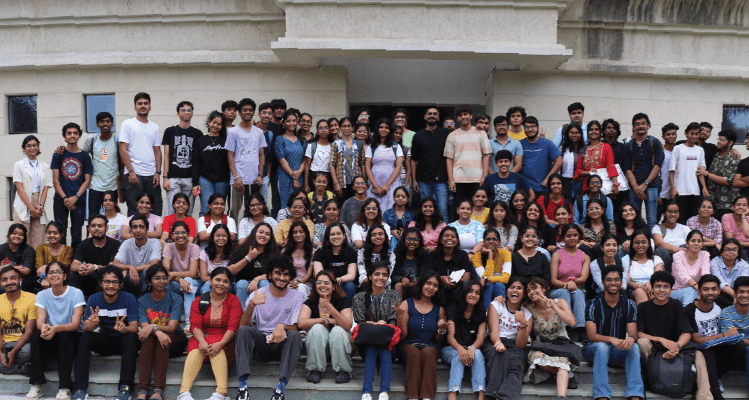What comes to your mind when you think about Coca-Cola's logo? What comes in your mind when you think about McDonald's, Netflix, Maggi, and Supremes' logos? Red. That's right, they are obsessed with red and the energy this tint radiates. Why does that happen? Why is red considered as a dominant colour? Colour is one of the main tactics companies use to connect with their customers. Red is an interesting colour and can awake a sense of urgency and can increase our appetite. The colour red is used in many cultures of the world, which gives us a good reason for its dominance.
Talking about colours, traffic lights usually consist of red, yellow, and green. But, in Japan, the traffic signals replaced green by blue. That is right! Blue is equivalent to green. While explaining all about branding and colour psychology, our guest speaker Himanshu Khanna made sure the session was very interactive and the students were actively participating in questioning and answering what came into their mind while branding and their strategies to build consumer’s relationship.
He is the founder of Sparklin, a human-centered design company with 70+ clients spread over 22 countries and a deep believer in the strength of communities and a leader by heart, he is creating a user-focused creative-only platform called Openvy.
Branding and marketing are two different aspects of selling a product or service. But both demand user satisfaction and happiness of the targeted consumers. A brand speaks levels of a customer’s gut feeling about a product, service, or company.
Talking about talking, the conversation with an AI-bot seems quite unnatural. Every time you want to talk, you say,” Alexa, do this…'' or “Hey Siri, do that....”. On the other hand, while talking to people we do not greet that often. So at Slang Labs, the SDK maintains a continued conversation. It accelerates the efficiency of every user of every app.
For example, Maggi, the things that go into the making of the famous tastemaker of the noodles and the instant “2-minute noodles” mantra is very popular among millions of customers and they rely on that, even though it takes more than 2 minutes to cook the noodles, they are successful at selling their products.
Brands who have to thrive in their respective industry have to make sure that they are innovative with their ideas regarding advertisements. Most of them endorse celebrities to gain attention and build the goodwill of the brand.
Although, companies like Apple and Samsung do not endorse celebrities to bring attention to them as they draw the attention of the users through innovation and development in technology. Both companies stellate different kinds of personalities. Thus, people choose them, otherwise selling phones which are cheaper than those two will draw different kinds of people’s attention. This is because they are easy to buy and are a complete rip off (like Xiaomi and OnePlus), of famous brands like Apple and Samsung.
He spoke about how the premium brands always want to show themselves are customer-centric or people-focused. For example, Apple has a signature tune, which is remembered by almost everyone and when heard in public, people around know that you own an iPhone. Indirectly Apple is trying to market itself.
He explained about how advertisements give a huge shoutout to a company. It consists of creatives and the brand logo, where the innovation of the product plays a huge role. People recognize through logos and the colours used playing a psychological role. He elaborated on how a brand like Cadbury plays a big role in gifting confectioneries on a special occasion and how we think of having a Cadbury chocolate when we crave for something sweet. Starbucks too uses the aroma of coffee in its cafés. The scent draws customers and they want to check out space, the interiors too look contented, relaxed, cozy, casual, and warm.
He mentioned how his company catered to a financial company’s service by creating a new brand identity. One of the most important facts he pointed out was, “Brands do not care about criticism as long as they are developing a great technology or a product or service for the users”. There has to be some negatives in order to counter some positives.
The session ended with a lot of questions raised by the students vis-à-vis branding. It was a pleasure having Himanshu Khanna explain branding beyond a logo to us. We anticipate making some remarkable changes to bring out the best in the future.
Written by,
Niharika Gupta
